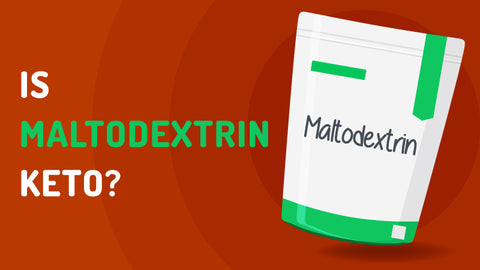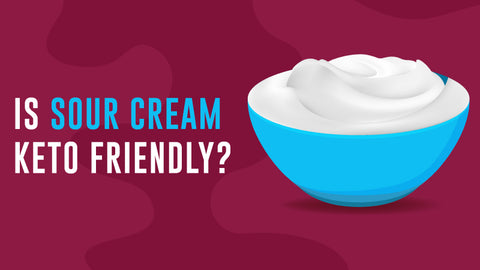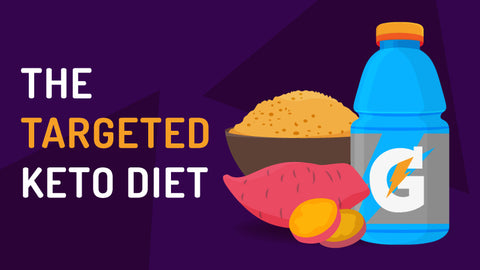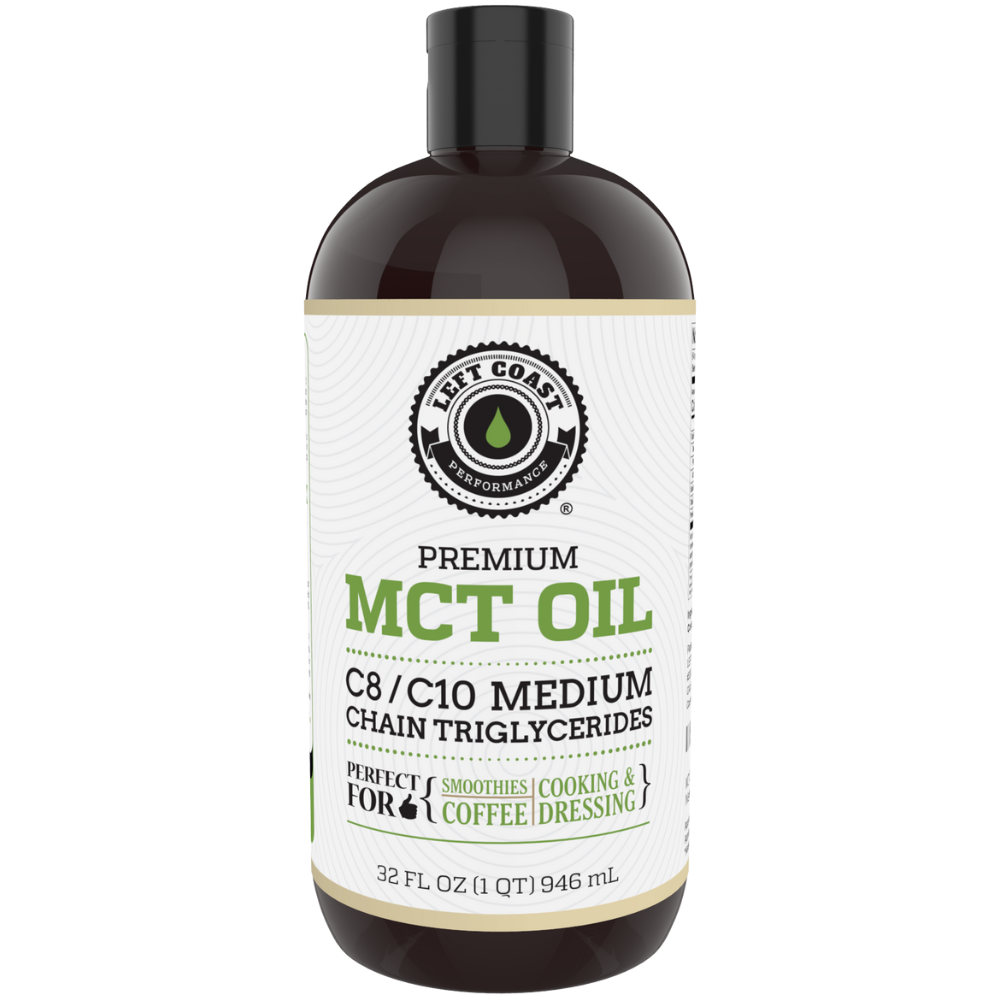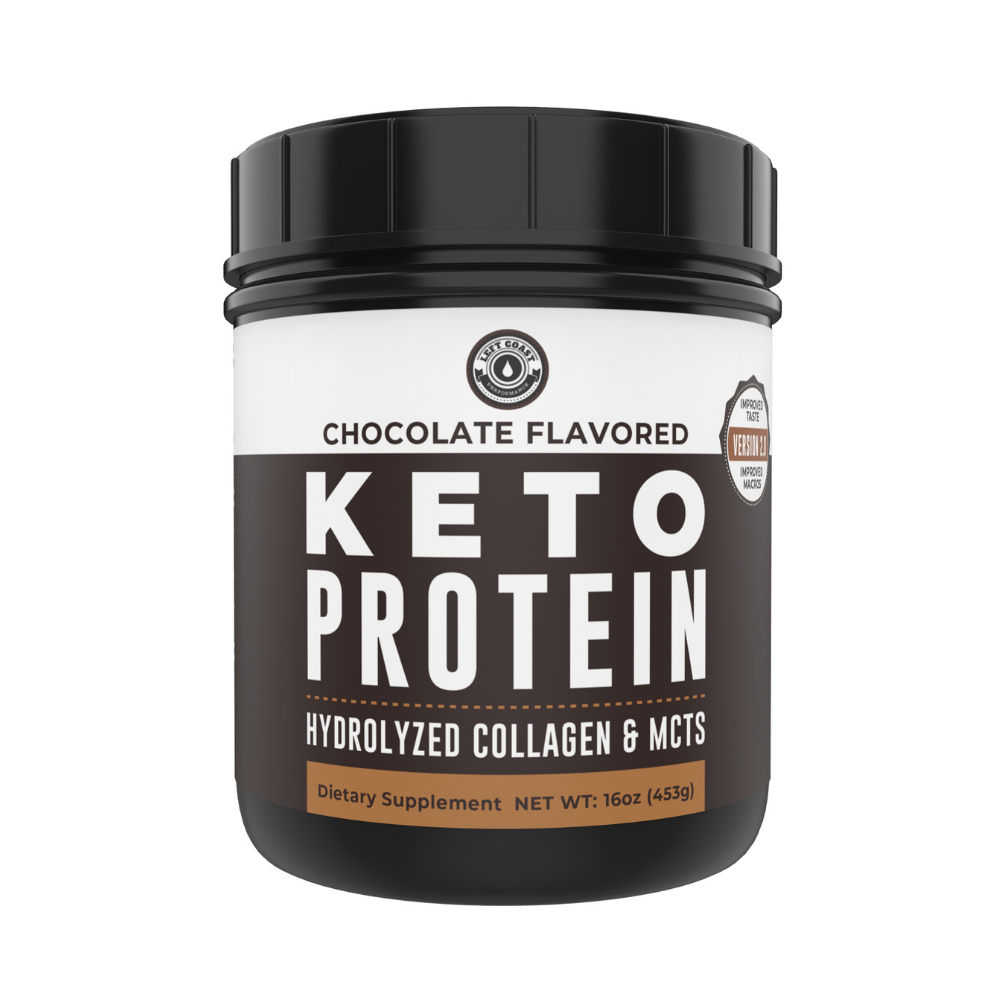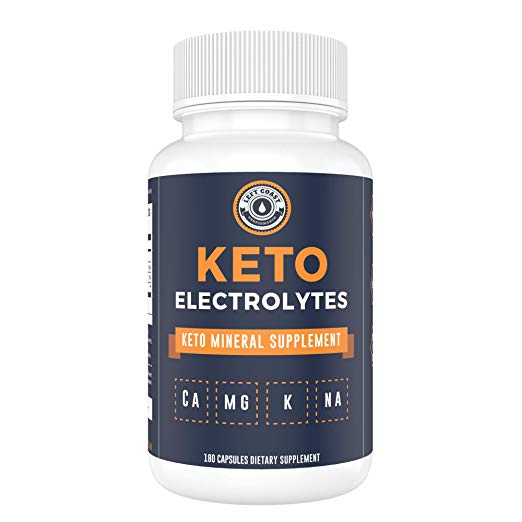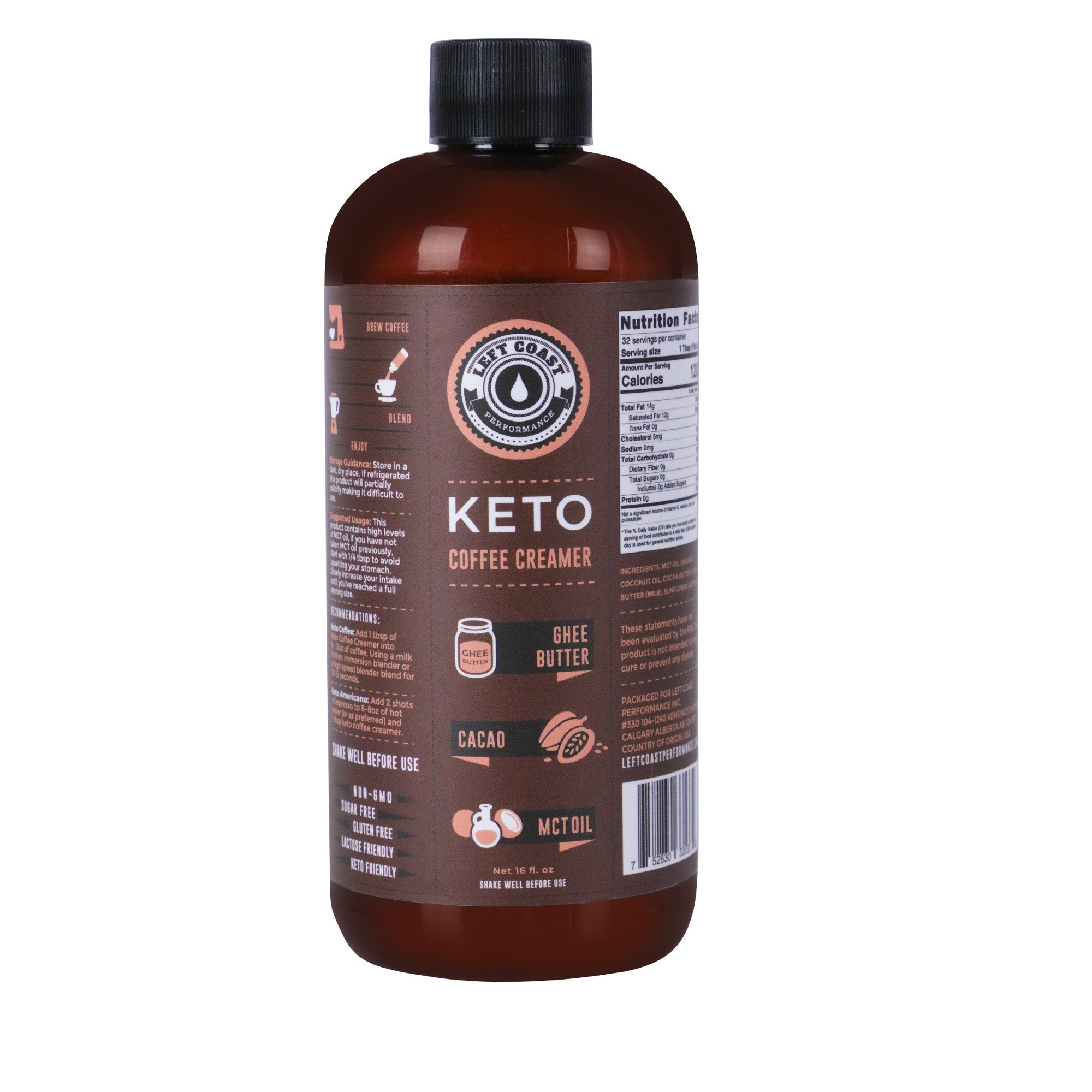Keto Diet Food List
![Keto Diet Food List [PDF Inside]](http://leftcoastperformance.com/cdn/shop/articles/diet-foods.jpg?v=1568161912)
on September 10, 2019
Learning to shop on the keto diet is a major lifestyle transition. It requires a transformation of the way you think in terms of “good” and “bad” foods. Foods you once considered healthy can be total ketosis-busters, while foods you thought of as off limits can suddenly become staples in your diet.
Downloadable Keto PDF Food List
Once you’ve mastered a few basic concepts, however, shopping on keto becomes a lot easier. To help you get a handle on what to eat, we’ll break down what constitutes the ideal keto food for all of the major food groups.
No one’s perfect, though, and following an ideal diet 100% of the time isn’t sustainable, so we’ll also include some suggestions that are generally good options to add to your basket on your next grocery run.
How to Shop For a Keto Diet
Let’s begin with the general standards of what you’re looking for in keto foods across all food groups.
The biggest overarching keto principle is that foods must be low in carbohydrates. This will be the first thing you consider when checking whether a food is keto-approved. Pay attention to fiber content, which brings down the number of net carbs since it passes through the digestive system without being broken down.
The next keto principle is high fat content. Since we’re no longer fueling our body with carbohydrates, fat is our new essential fuel source. It will make up the majority of your daily caloric intake.
The ideal keto fats are monounsaturated and polyunsaturated. Research suggests that monounsaturated fatty acids, or MUFAs, lower your risk for heart disease, improve the function of your blood vessels and help control blood sugar levels. Polyunsaturated fats also help lower risk factors for heart disease by lowering your bad cholesterol and slowing the buildup of plaque in your arteries.
Saturated fats, like those found in meat and dairy, will play a role in your keto diet as well. They don’t pack the rich heart health benefits of monounsaturated and polyunsaturated fats, but nutrition experts say it’s okay to consume saturated fats in moderation.
The fats you want to watch out for--whether you’re following a keto diet or not--are trans fats. These are a bi-product of processing and have no health benefits. In fact, they’re quite harmful, contributing to higher cholesterol, inflammation, diabetes and more. The good news is that non-processed foods contain almost no trans fats, and the keto diet naturally shies away from most processed foods.
The final principle of the keto diet is a considerable protein intake. While fat will make up the majority of calories, you’ll likely need to step up your protein intake, as well. Protein serves important bodily functions like repairing damaged muscle tissue and building new cells. It also helps keep us feeling full and energized. The ideal keto proteins are from whole food sources like meat, poultry, fish, eggs, cheese and some types of nuts.
To recap, the ideal keto food is free from carbohydrates, rich in high-quality fats and a good source of protein. We’ll talk more about foods from each food group that meet these requirements below.
Of course, not all foods will hit every one of these targets. Many foods that you’ll eat will still contain some carbs; as long as it’s a low number and you’re keeping tabs on how many carbs you’re consuming throughout the day, you’re safe eating foods that are low in carbs and high in fat, protein or both.
Ideal:
- Food with 0-3 grams of net carbs per 100 gram serving; high in healthy fats, protein or both
Good:
- Foods with under 6 grams of net carbs per 100 gram serving
Produce
We’ll begin with produce, because this can be one of the trickiest food groups for new keto dieters. Many produce items that are great sources of nutrients--apples, for example--have no place in the keto diet due to their high carb count. Lots of fruits fall into this category.
The ideal keto produce items are those that deliver a healthy serving of nutrients while leaving carbs out of the equation. Arugula is one such example. One cup of arugula contains less than a gram of net carbs, but it’s rich in folate, calcium, potassium and magnesium.
Ideal:
- Arugula
- Kale
- Avocado
- Spinach
- Cabbage
- Endive
- Bok choy
- Asparagus
- Broccoli
- Cauliflower
- Celery
Good:
- Bell peppers
- Cucumbers
- Tomato
- Zucchini
- Eggplant
- Artichokes
- Raspberries
- Blueberries
- Blackberries
- Strawberries
Meat
This food group is easy to grasp, as fresh meat and poultry contain zero carbs. They’re strong sources of B vitamins and helpful minerals like potassium, selenium and zinc. You can get comfortable with this food group because it’s one that will form the basis for many of your keto meals.
Grass-fed beef and pasture-raised chicken and pork are at the top of the list in terms of quality. Grass-fed beef is leaner and healthier than its grain-fed counterpart, with 50% more omega-3 fatty acids and a greater quantity of antioxidants, vitamins, and a beneficial fat called conjugated linoleic acid. Pasture-raised chicken and pork have similar benefits and fewer of the problems associated with meat raised in factory farms.
All fresh cuts of meat and poultry generally get the green light on keto. Steak, chicken, pork chops and lamb chops are all good options. Bacon and sausage are okay too, just be sure to check the label on these for added sugars.
Ideal:
- Grass-fed beef
- Pasture-raised chicken
- Pasture-raised pork
- Lamb
- Veal
Good:
- Ground beef
- Ground turkey
- Ham
- Bacon
- Sausage
Fish
Fish and many types of shellfish are naturally low in carbs and high in healthy fats. Salmon, for example, is one of the best sources of omega-3 fats, which can help lower the risk of heart disease, dementia, arthritis and even depression. These healthy fats aren’t naturally produced by the body, so it’s all the more important to include them in your diet.
Wild-caught fish is preferred to farm-raised because it’s less likely to be exposed to contaminants and disease. Wild-caught fatty fish are some of the best keto fish options. As for shellfish, opt for the varieties with the lowest number of carbs, like shrimp, lobster and crab.
Lean fish like mahi mahi are also good keto fish options, while shellfish like clams, mussels and oysters are okay in moderation, too. Don’t forget about canned fish like sardines and anchovies, which make for tasty salad toppings.
Ideal:
- Salmon
- Tuna
- Mackerel
- Trout
- Shrimp
- Lobster
- Crab
Good:
- Cod
- Mahi mahi
- Tilapia
- Clams
- Mussels
- Oysters
- Scallops
- Sardines
- Anchovies
Deli
Deli meats and cheeses can be a godsend when you don’t have time to cook. Roll them up and munch on them for a fast and easy serving of protein and fat.
Your best bets at the deli are lean meats like shaved turkey breast, which contains a whopping 13 grams of protein and no carbs in a single serving. When possible, consider choosing the low-sodium varieties to keep your salt intake in check.
It’s hard to go wrong with cheese on keto, but if we must play favorites, swiss cheese is an excellent deli pick with 9 grams of fat, 8 grams of protein and less than a gram of carbs per one-ounce serving.
The deli is also a great place to scoop up other favorite keto-approved snacks like bleu cheese stuffed olives.
Ideal:
- Turkey
- Chicken
- Ham
- Sliced cheeses (swiss ,provolone, cheddar, etc.)
- Olives
Good:
- Pepperoni
- Salami
- Pastrami
- Corned beef
- Prepared salads like tuna, chicken and egg salads
Dairy
Like the produce section, the dairy aisle is a part of the grocery store that will take a bit of getting used to on keto. Dairy is a natural source of lactose, which breaks down into glucose (read: carbs), so you’ll need to check labels carefully. Dairy is, however, a great source of protein and healthy fats, so don’t rule it out entirely!
Because we want to fuel our body with healthy fats, opt for full-fat dairy items, which contain fewer fillers and carbs than their processed, low-fat counterparts. Dairy products can also be highly useful for replacing other carb-filled ingredients in recipes. Just be sure to keep an eye on your consumption, as the carbs in these items can add up as portions increase.
Ideal:
- Eggs
- Butter
- Ghee
- Hard cheeses (parmesan, feta, etc.)
- Soft cheeses (mozzarella, brie, etc.)
- Whipping cream
Good:
- Cottage cheese
- Sour cream
- Cream cheese
- Greek yogurt
- Plain yogurt
- Ricotta cheese
Dry Goods
Easy to buy in bulk and store, dry goods are essential for building your keto pantry. This is one of the few categories where some processed foods will fall under the keto-approved banner.
Stock up on low-carb, high-protein keto snacks like pork rinds, which are carb-free. Certain nuts like pecans are low on carbs while being good sources of fat, fiber and protein.
Also approved in the dry goods category are nut butters, like almond butter and sunflower seed butter, which are relatively low in carbs and high in fat and protein. Just be sure to check the label carefully, as some brands fill their nut butters with sugar.
Ideal:
- Pork rinds
- Brazil nuts
- Macadamia nuts
- Pecans
- Chia seeds
- Almond flour
- Coconut flour
- Almond butter
- Seasonings (cinnamon, cumin, cayenne powder, etc.)
- Mayonnaise
- Mustard
- Rach dressing
Good:
- Beef jerky
- Cheese crisps
- Sunflower seeds
- Sunflower seed butter
- Cashew butter
Downloadable Keto PDF Food List


